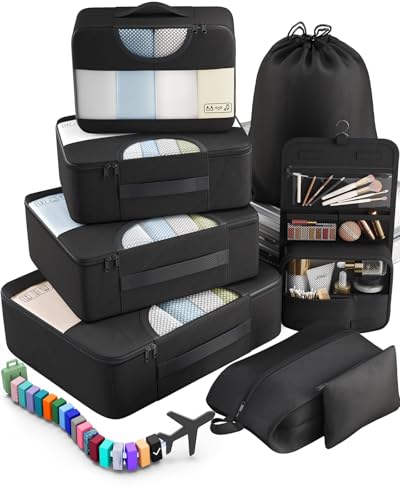In Papua New Guinea, they use Type I power plugs and outlets. The voltage is 240V, and the frequency is 50Hz.
So, you’ll need a travel adapter in Papua New Guinea. Their plugs and outlets are different from the Type A and B ones we use back in the States.
Quick Overview of the Plugs in Papua New Guinea:
- Plug type in Papua New Guinea: I
- Standard voltage: 240V
- Frequency: 50Hz
- Need a travel adapter? Yes, you do need a travel adapter
- Need a voltage converter? You might need one for certain items
- Recommended plug adapter: Vintar Universal Travel Adapter Kit
Our information is based on official power regulations from each destination, international IEC standards, and input from travelers who’ve experienced it firsthand.
The Only Travel Adapter You’ll Need in Papua New Guinea
A cheap, unreliable travel adapter can overheat, fry your devices, or stop working mid-trip—and no one wants that. We don’t sell them, but we’ve done serious research to find the safest and most reliable option for Papua New Guinea. Tested for compatibility, durability, and charging speed, this one won’t let you down:
Recommended Travel Plug Adapter
by 1,000+ travelers on Amazon
Already traveling or just arrived and forgot your power adapter? It happens, and you’ll likely find one locally. But when you bring a trusted one from home, you know it’s the right fit, safe to use, and won’t let you down.
People visiting Papua New Guinea often also explore Australia, Solomon Islands, and Indonesia. Always check whether you’ll need a different adapter.
Power Outlets in Papua New Guinea
In Papua New Guinea, they use Type I power plugs and outlets.
Type I

Type I outlets have two flat prongs in a V-shape with a grounding pin and accept both grounded and ungrounded Type I plugs; some ungrounded Type A plugs may fit with an adapter, but grounding will be lost.
Do You Need a Voltage Converter?
Since the voltage in Papua New Guinea doesn’t match the U.S. standard of 120V, you’ll likely need a voltage converter to avoid damaging your devices.
Before using your electronics abroad, always check the power input label on your device. If it states “100-240V, 50/60 Hz”, your device is designed for worldwide use and works on both 120V and 220-240V without the need for a voltage converter. Many modern gadgets, including laptops, tablets, and cameras, have this feature.

Which Travel Devices May Need a Converter?
Not sure which voltage converter to get? Take a look at the best-rated ones right here.
| Device | Need Converter? | Notes |
|---|---|---|
| Phone | ❌ No (usually) | Most modern phone chargers are dual voltage (100–240V) |
| Laptop | ❌ No (usually) | Check the power brick label for 100–240V |
| Hairdryer | ✅ Yes (often) | High wattage; many models are not dual voltage |
| Electric toothbrush | ⚠️ Check voltage | Some models are 110V only |
| Camera / DSLR | ❌ No (usually) | Most chargers are dual voltage |
| Power bank | ❌ No | Charges via USB, adapter is enough |
| Electric shaver / trimmer | ⚠️ Check voltage | Older or cheaper models may not support 230V |
| Tablet / iPad | ❌ No | All models are dual voltage |
| Portable fan | ✅ Yes (sometimes) | Many models are not compatible with 230V |
| Game console | ⚠️ Check voltage | Newer consoles like PS5 and Xbox are often dual voltage — check to be sure |
| Bluetooth speaker | ❌ No (usually) | Charges via USB |
| E-reader (Kindle, etc.) | ❌ No | USB charging only, no converter needed |
Top Travel Essentials to Pack
Once you’ve sorted the right adapter, it’s worth packing a few extra essentials. They won’t take up much space, but they’ll make a big difference during your trip.
Digital Luggage Scale
Packing Cubes
Power Bank
More About Papua New Guinea
Papua New Guinea welcomed around 144,000 international visitors in 2023, more than doubling the previous year. Cruise travel is a big growth area, with over 30,000 visitors arriving by sea—a major boost for towns like Alotau and Rabaul. Overall tourism spending was strong, with hundreds of millions of dollars flowing into the local economy. While PNG isn’t mainstream, it’s definitely growing in appeal among adventure seekers and cultural travelers alike.
The country offers unmatched diversity: more than 800 languages, wild landscapes, coral reefs, active volcanoes, and vibrant cultural festivals like the Goroka Show. Dive enthusiasts flock to spots like Kavieng and Tufi, while birdwatchers come in search of the elusive birds of paradise. Whether you’re exploring WWII relics, village life, or rainforests teeming with wildlife, PNG offers a raw, unforgettable travel experience. It’s off-grid travel in the best way.
For U.S. travelers, Papua New Guinea means real exploration. English is widely spoken in tourist areas, and while infrastructure is basic, the hospitality is strong and tours are well-organized. It’s not for everyone, but if you’re after true cultural immersion, pristine nature, and adventure with a dose of unpredictability, PNG should be on your radar. It’s the kind of place where every day brings something new—and that’s exactly the charm.
Top places to visit in Papua New Guinea: Port Moresby, Alotau, and Rabaul.




